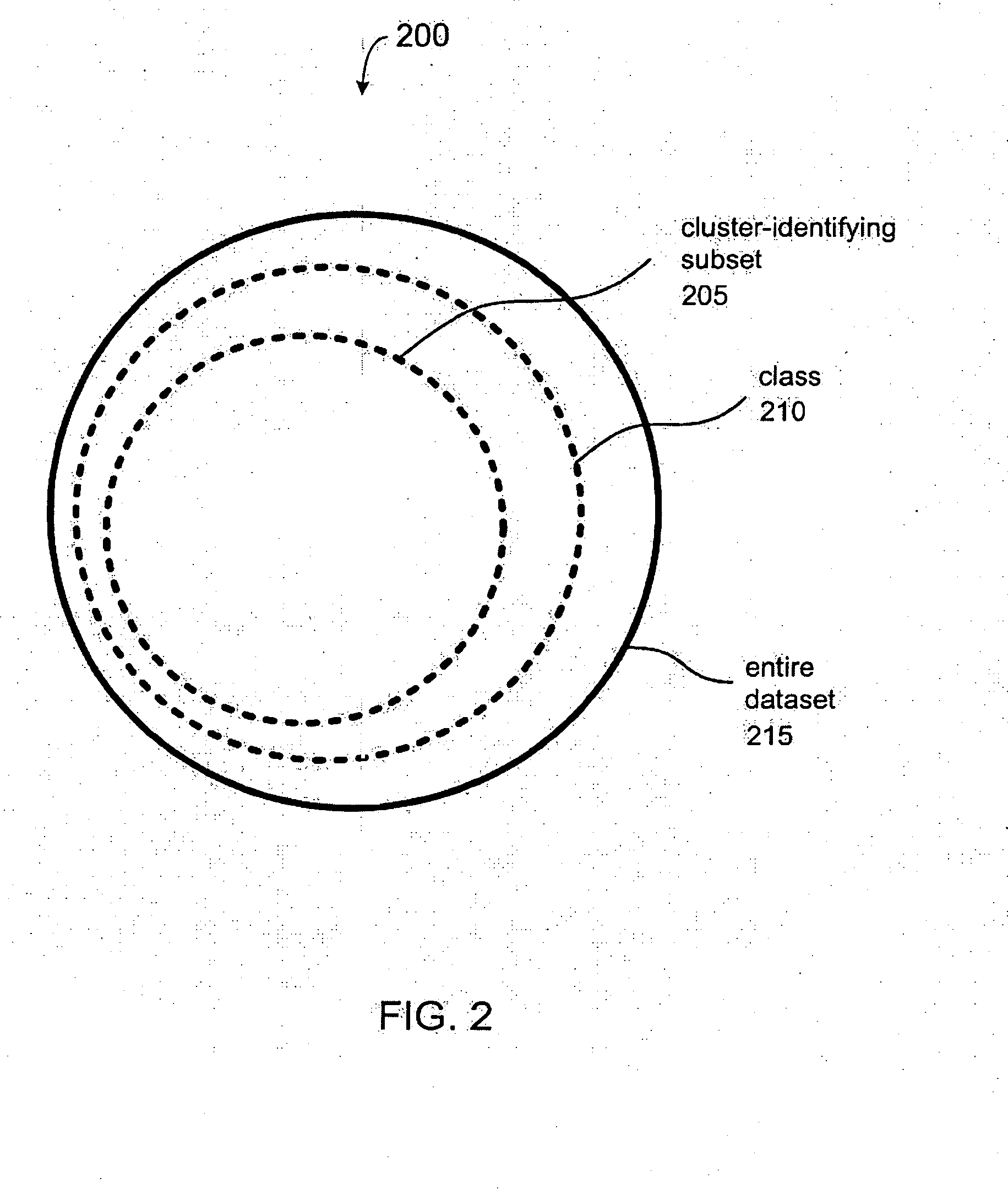System And Methods For Clustering Large Database of Documents
a large database and document technology, applied in the field of documents, can solve the problems of slow and costly processes, system failure, and inability to efficiently market university ip licensing, and the buyer community may be frustrated by the lack of visibility into new inventions and r&d activity
- Summary
- Abstract
- Description
- Claims
- Application Information
AI Technical Summary
Benefits of technology
Problems solved by technology
Method used
Image
Examples
process example
Cluster Merging Process Example
[0293]Once clusters are created, the system refines them based on their relationships into large units. The system starts with something akin to the to the diagram of FIG. 25A. Next, referring to the diagram of FIG. 25B and steps at 2503-2509, for every cluster, in 2501b the system finds all of those with which each of the clusters shares some patent-level similarity. With reference now to the diagram of FIG. 25C, the cluster with which the greatest similarity (e.g. 2503-2509) exists merges with the query cluster to form a larger cluster. As shown in the diagram of FIG. 25D, similarities to this new cluster are calculated while the old clusters from which it is formed are moved from the cluster set 2501d. Finally, now referring to the diagram of FIG. 25E, the new cluster is placed in the set 2501e so that the process can continue.
[0294]By keeping track of the information in the merging steps, at the end, the system has one or more cluster hierarchies, ...
PUM
 Login to View More
Login to View More Abstract
Description
Claims
Application Information
 Login to View More
Login to View More - R&D
- Intellectual Property
- Life Sciences
- Materials
- Tech Scout
- Unparalleled Data Quality
- Higher Quality Content
- 60% Fewer Hallucinations
Browse by: Latest US Patents, China's latest patents, Technical Efficacy Thesaurus, Application Domain, Technology Topic, Popular Technical Reports.
© 2025 PatSnap. All rights reserved.Legal|Privacy policy|Modern Slavery Act Transparency Statement|Sitemap|About US| Contact US: help@patsnap.com



